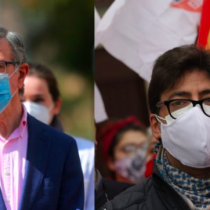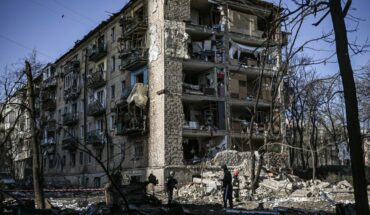
The profiles of Mayors Daniel Jadue and Joaquín Lavín are not so different on social media (RRSS) than can be seen in their frequent television interventions. While the mayor of Las Condes, in his new reinvention, has managed to cultivate an apolitical and desideologized profile both in the offline and online space, his pair of Recoleta has achieved the same by showing himself in the digital context as he does outside it: as an innovator in municipal management, a politician present in the national contingency and who , unlike the previous one, does want to politicize citizens.
Although the presidential scenario is still dispersed and the support that marks both are still minority, by piqued mistrust in their own political sectors, the strategies used to increase their political capital, the moods they arouse and the reactions they motivate, have both Mayoral leaders at the forefront of the classic opinion polls of recent months, which would make an eventual run-off between the two a highly competitive ballage.
But demoscopy – that branch of sociology that studies the orientations of public opinion – applied to the digital world, has been giving several months ago a different photograph that shows that both are separated by a sea away, whose parameters are not defined by ideology, but by the “likes” and interactions they provoke on social media every time they use them and where the scope of the communist presidential is separated into several hundred thousand his UDI peer, self-defined in its 2020 version as a Social Democrat.
Overcoming the echo chambers
Following a permanent follow-up to the figures with the highest presidential projection, as well as the very behavior that is seen in RRSS of the electoral events that depart with the plebiscite this October 25, the Group of Electronic Demoscopy of public space (DEEP), of the Catholic University of Valparaiso – led by Pedro Santander and which has been monitoring political conversation on social networks since the 2017 presidential elections – has detected that the digital community of Jadue , both on Twitter (more than half a million followers) and on Facebook (almost 140 thousand) and also on Instagram (117 thousand), it has a greater emotional connection – also called engagement – with the mayor of Recoleta, than the community of Lavín.
“The interaction that Jadue manages to provoke in users is very high and realizes that he crossed the contours of so-called ‘echo chambers’, that is, communities where only yours are, speaking to themselves. On the contrary, the level of interaction shown by various communities in their immediate and prolific reactions with the posts of the mayor of Recoleta show us a very interesting phenomenon, having hundreds of thousands of active users, attentive and pending what he expresses”, explains Pedro Santander, at the head of the DEEP. “Jadue achieves, in that sense, a connection with the digital attention of hundreds of thousands of network users that is also positive, because most reactions are likes,” he says.
Although the mayor of Recoleta is less prolific than his peer of Las Condes, in the sense that he puts in circulation fewer messages in the networks, the elements recorded by the DEEP, through the database provided by the national company Analitic, indicate that for each tweet or post of Jadue, thousands of reactions are generated among users.
From September 1st to October 1st, of Jadue’s 73 posts on Facebook, they generated 304,077 reactions, with 157,980 of them likes.
This high figure indicates that every time the mayor of Recoleta post something in Mark Zuckerberg’s network, he generates, on average, 4,165 reactions.
Compared to Lavín, it is appreciated that in the same month of September the mayor of Las Condes generated 96 poles – 23 more than Jadue – but only achieved 54,239 interactions, almost 250 thousand less than Jadue.
On Twitter the wave of reactions to any Jadue comment behaves similarly. The 80 publications he made between September 1 and October 1 generated just over 243,000 interactions. And the trend remains on Instagram, where in the same time range 33 posts of yours generated 124 interactions, most of them likes.
On the other hand, DEEP warned every month of this year the interest to follow Daniel Jadue’s account, so that his “accumulated fans”they do. “This is what happens on Facebook during September, for example, the month in which the number of followers increased by 2.3%, compared to just 0.1% of Lavín, in a growth trend that is rising month by month.”
The focus of Lavín and Jadue
As for the contents, Santander appreciates that what Lavín chooses to communicate are mainly messages related to its municipal management, in which it projects its mayoral figure. In the case of Jadue,” he adds, “he also does, by reporting a lot about the commune of Recoleta on urban orchard planting programs, debris removal, control in the Patronage neighborhood against illegal parking meter collectors, etc.
But unlike Lavín, the analyst argues, “the mayor of Recoleta “also enters the national contingency and, in that sense, is very attentive and attentive to the political situation day by day. For example, speaking on the issue of the health crisis, the constitutional plebiscite, the commemoration of the murder of Victor Jara, etc.” In that participation, in the opinion of the investigators, the key could be.
A clear example of this is seen in the mayors’ last poles, where jadue is seen to have a view of national policy and Lavín of his commune.
So far this october, the next one is Jadue’s most significant tweet, the one that has generated the most interaction: 3.8K rt and almost 9K likes.
The difference with Lavín is categorical. In the same period, the most reactions were generated by the next tweet, reaching 10 rt and 140 likes.
Demosscopic voltage
Although digital photography of the political scene, in some cases, continues to be underestimated in relation to classical surveys, for Pedro Santander this reasoning has the days numbered.
“It is an affirmation that realizes what we call a “demosscopic tension” that today, within the framework of the technological revolution, exists in the Social Sciences. A “sample critical” is generally made to digital exploration, which is also called social listening, and it is said that it is showing that it is sesathed and not representative of the population. But it is a fact that the forecasts of traditional surveys, all of them showing flawless, have failed in a notorious way in recent years. His predictive ability has been questioned worldwide,” says the director of the DEEP group.
Digital demoscopy, he says, however, allows the possibility of collecting and processing volume of data, unprecedented. “We ourselves as a team collect more than 9 million twitter mentions in 2017 in the presidential and now we have almost 6 million since October 18. This context reduces concern about randomization techniques and sample size, as size is no longer a problem. Big data decrease measurement errors and better reflect the complexity of natural phenomena.”
With a database of almost 6 million data recorded by deep since October 18 last year, there are multiple political photographs that this system begins to generate, which will be exposed to public opinion periodically by El Mostrador.





